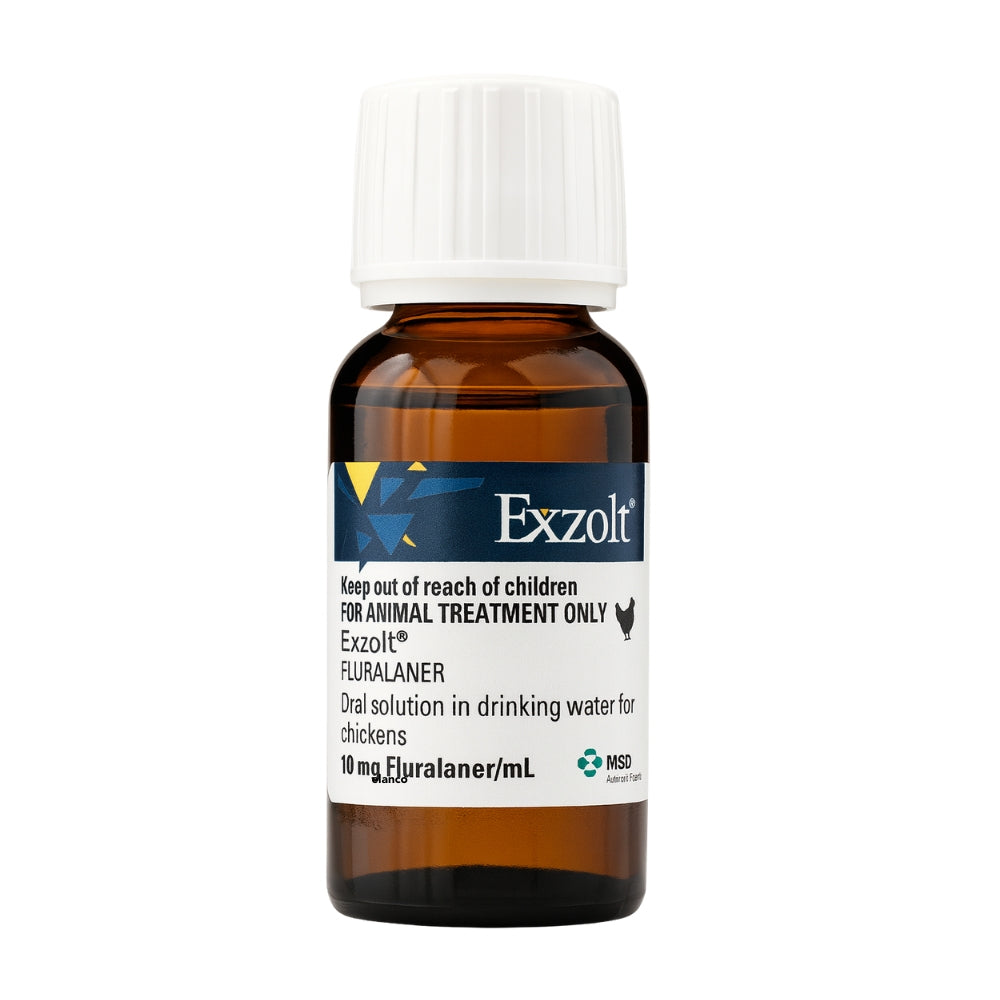

The Red Mite Toolbox: A Practical Guide for Backyarders
Red mites (Dermanyssus gallinae) are a common problem for backyard flocks. These tiny blood-sucking parasites cause stress, anaemia, feather damage, poor egg laying, and make birds more vulnerable to illness. Because they reproduce quickly and can survive for months in cracks and corners of the coop without a host, they’re very hard to get rid of once they’ve taken hold.
Effective control isn’t about one quick treatment — it takes regular coop checks, good hygiene, and the right products used at the right time. This guide shares practical tips to help you spot red mites early, manage outbreaks, and keep your chickens healthier and more comfortable.
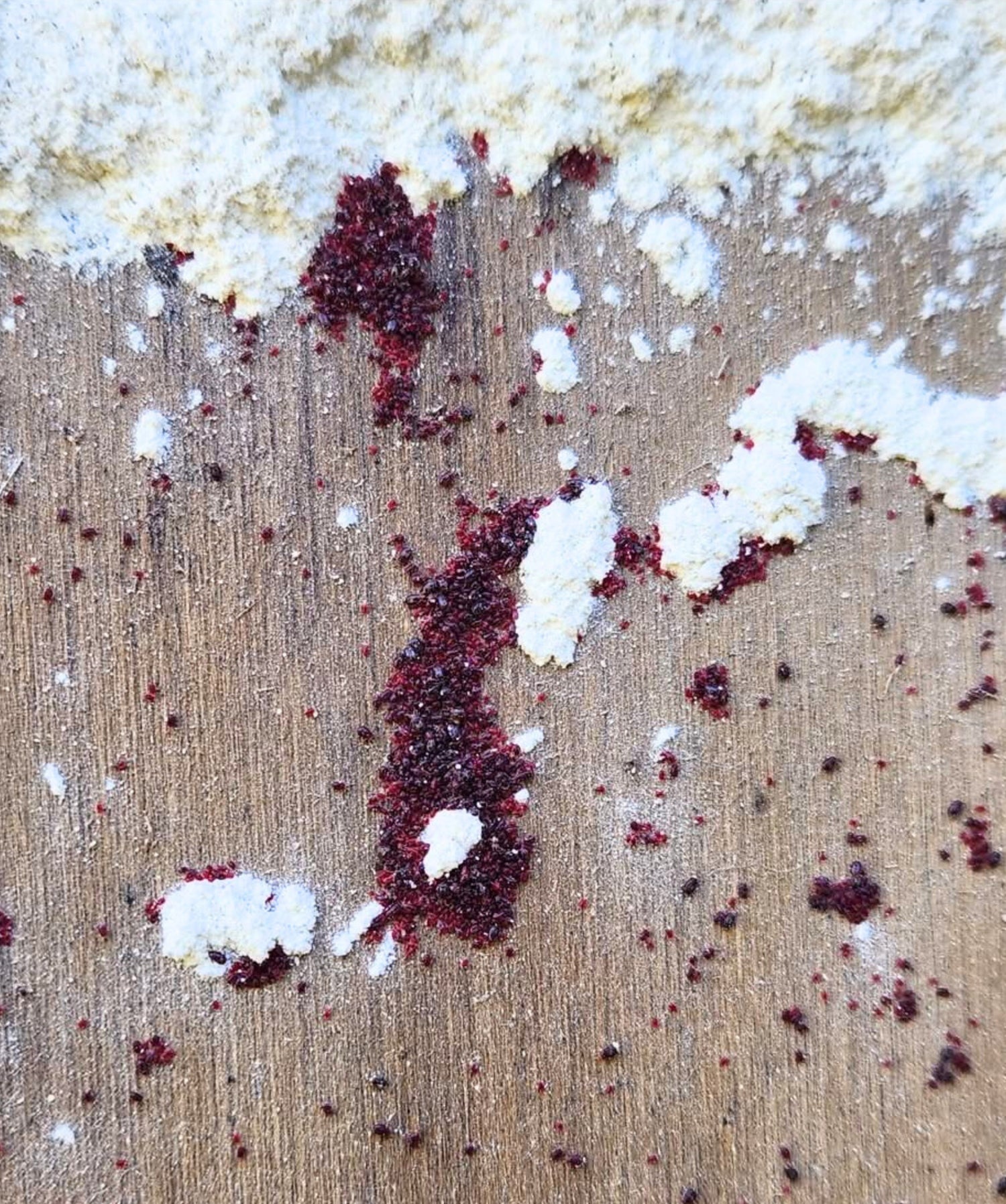
Pictured: Red mites happily living in diatomaceous earth.
Understanding Red mites
Poultry red mites (Dermanyssus gallinae) are nocturnal, blood-feeding ectoparasites that hide in cracks and crevices during the day and emerge at night to feed on birds. These mites thrive in warm, humid conditions, making infestations particularly severe during the warmer months. They cause considerable stress, irritation, anaemia, reduced egg production, poor feed conversion, and, in serious cases, increased mortality. They can also bite humans and other animals, leading to skin irritation and discomfort, and are known vectors of poultry pathogens.
A single female red mite can lay up to seven eggs after a blood meal, and the entire life cycle, from egg to adult, can be completed in just 7–10 days under optimal conditions. This rapid reproductive cycle enables population explosions in poorly sanitised environments or when control measures are delayed.
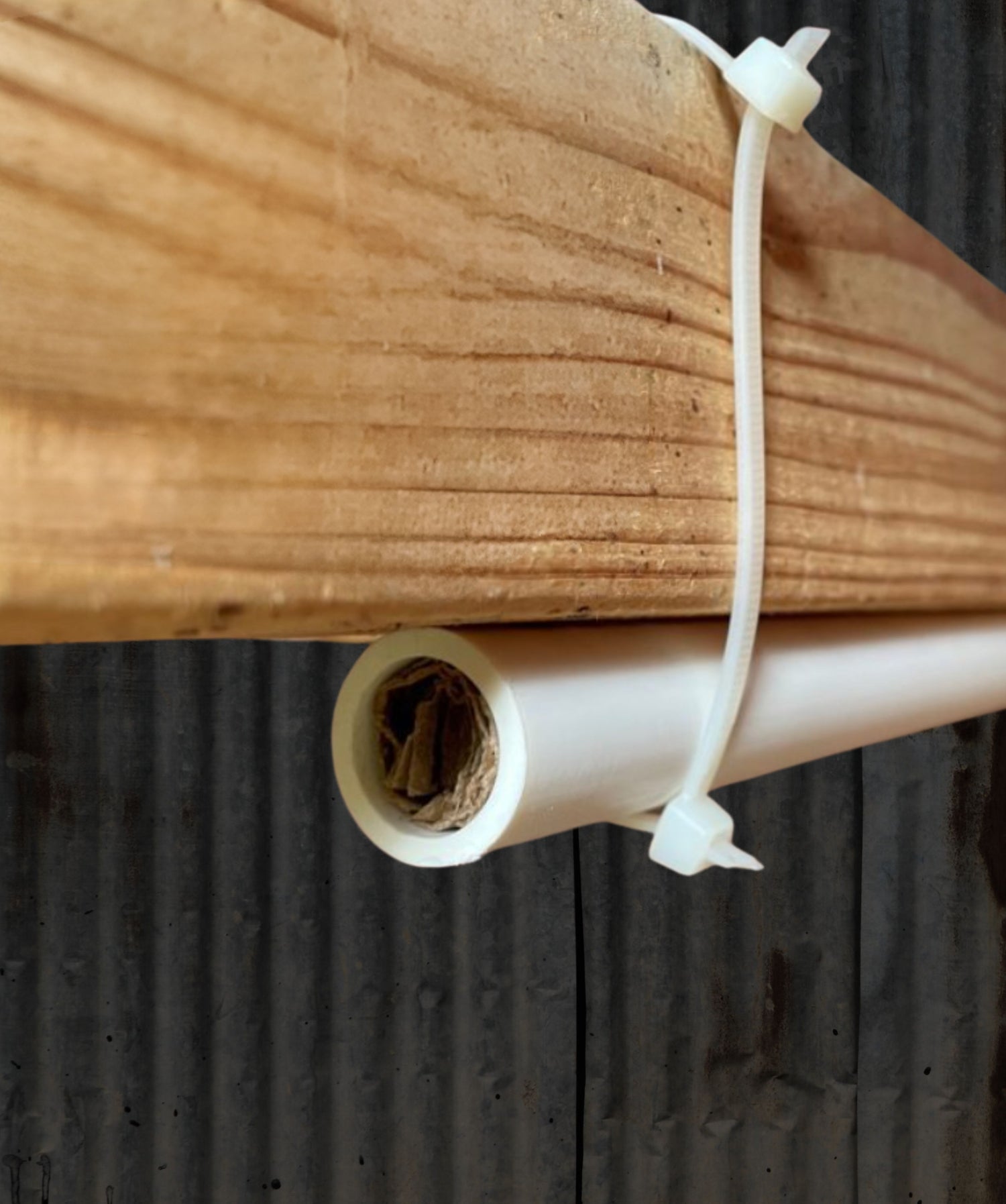
Monitoring & Early Detection in Your Coop
It’s a good idea to inspect your coop at least once a week, as red mites are masters at hiding. Check the most common spots: under perches, inside nest boxes, in cracks or joins of the wood, and under any slats or edges. A bright torch at night is especially helpful, as that’s when mites come out to feed. You can also try simple tricks like sliding a piece of corrugated cardboard into cracks (mites will crawl in), or using sticky traps to catch them.
Keep an eye on your chickens too. Signs of a red mite problem include:
- Chickens restless at night or reluctant to perch
- Pale combs or wattles (a sign of blood loss/anaemia)
- Sudden drop in egg production
- Feather loss or poor feather condition
- Avoiding the nest boxes or even the whole coop
Catching mites early makes a huge difference — the sooner you spot them, the easier they are to manage.
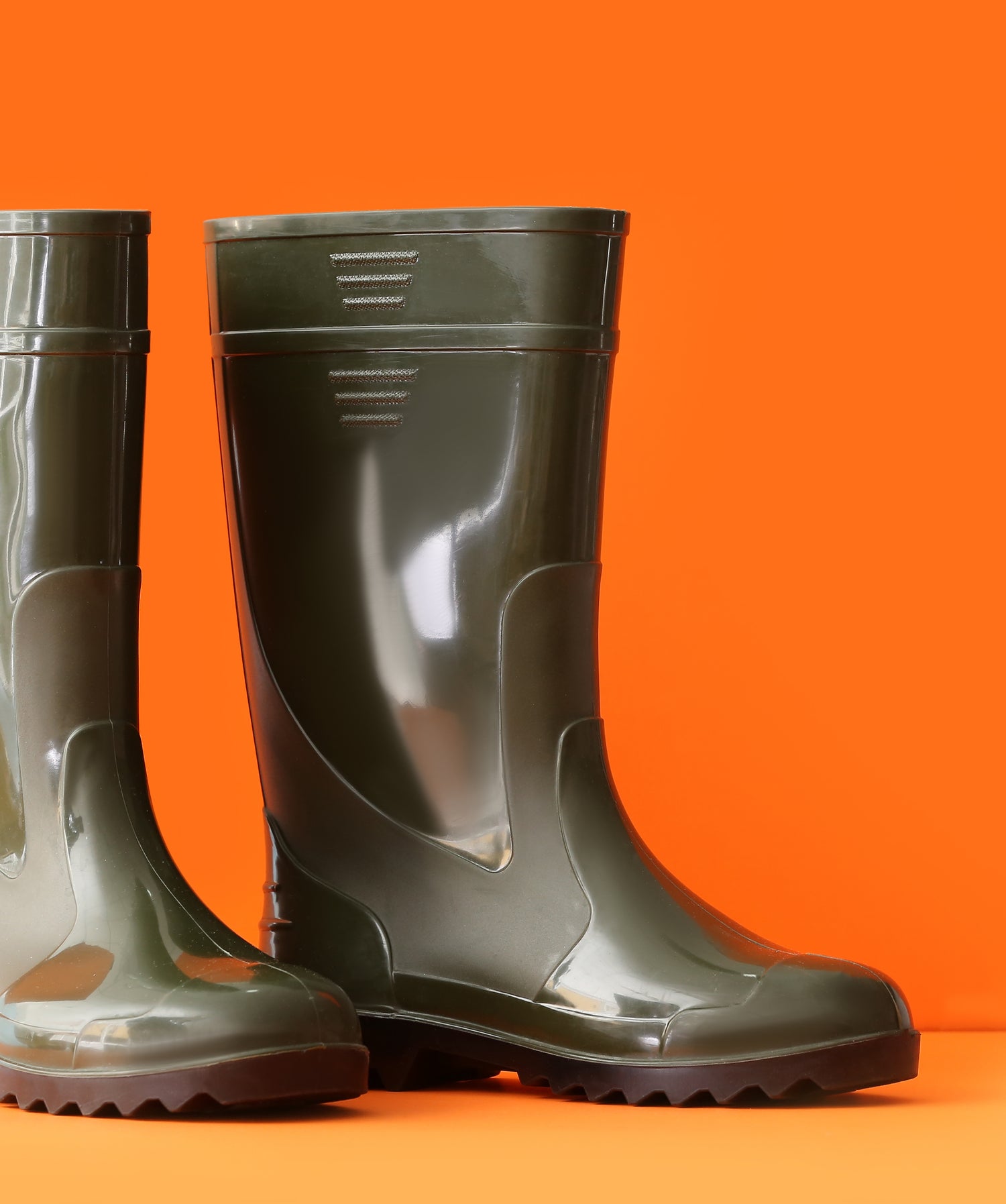
Biosecurity & Prevention
Keeping your coop clean and well-maintained is one of the best ways to stop red mites from moving in. Here are some easy steps you can take at home:
- Block hiding spots – Seal up cracks, gaps, and joins in your coop where mites love to hide. A smooth, well-kept coop is much harder for them to invade.
- Keep equipment clean – Wash and disinfect feeders, drinkers, and tools regularly. If you use second-hand gear, always give it a good scrub before it goes near your birds.
- Deep clean regularly – Every so often, do a full clear-out and scrub-down of the coop. This breaks the mite life cycle and gives your chickens a fresh, healthy environment.
- Discourage wild birds – Keep wild birds away from your coop and feed. Cover or clean up spilled grain, block entry points, and remove any nests near the housing.
- Reduce clutter – Be mindful of junk, old timber, stacked pots, or anything that creates dark nooks and crannies around your coop and run. Red mites love to hide in these spots and can easily spread back into your housing.
A little prevention goes a long way — these simple habits can keep red mites under control and your flock happy and healthy.
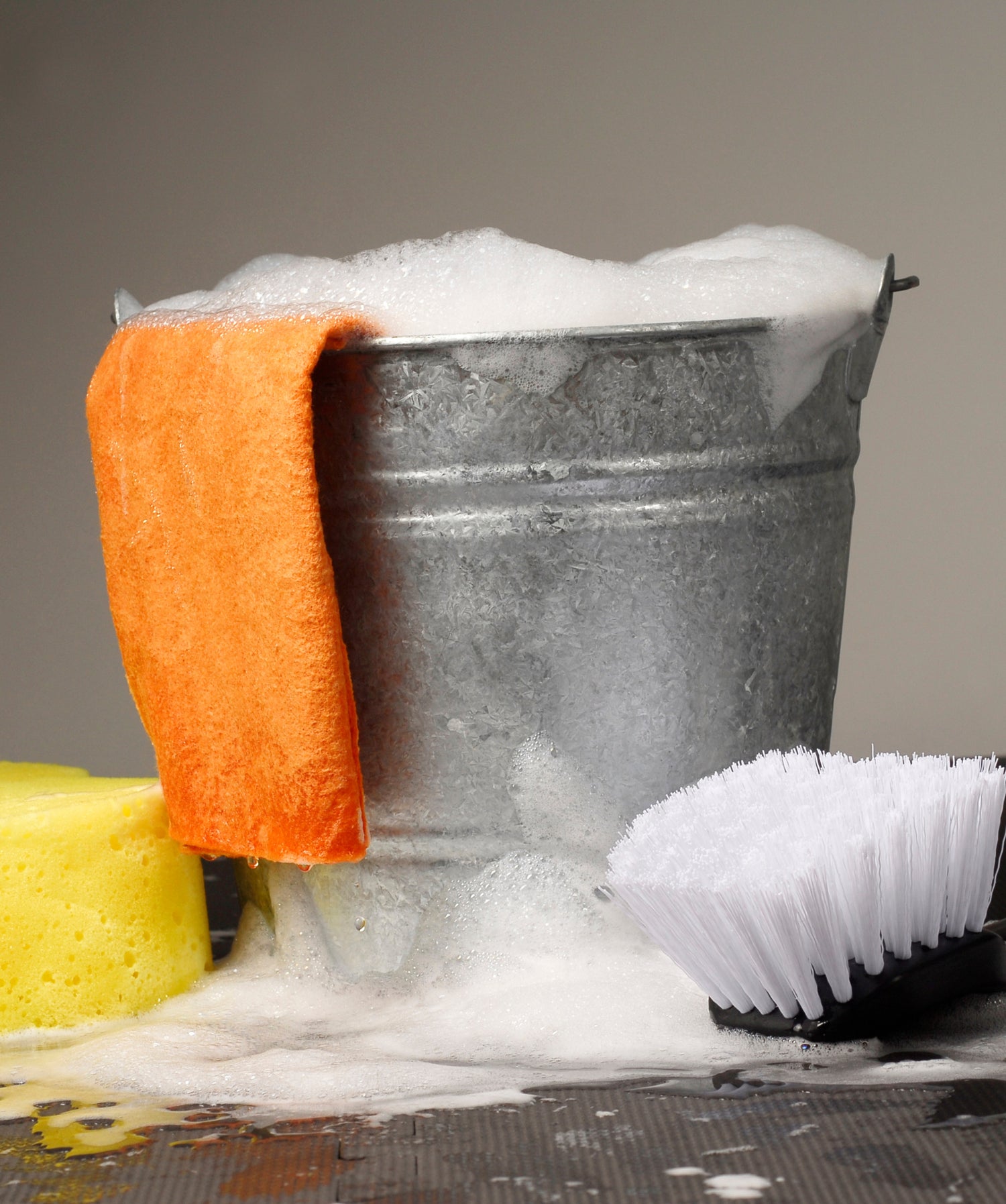
Cleaning & Disinfection
Red mites are tough little pests, and once they’re in your coop, they can be hard to shift. Regular deep cleaning is one of the best ways to keep them under control and stop them from coming back.
- Clear it out – Start by removing all old bedding, manure, feathers, and dust. Take out perches, nest boxes, and feeders if possible, so you can get into every corner. Mites love cracks, joints, and dark spots.
- Wash down – Give the coop a good scrub with warm soapy water or a poultry-safe detergent. A stiff brush or even a garden sprayer can help. Make sure you get into joints, perches, and under nest box edges.
- Disinfect – Use a poultry-safe disinfectant or mite spray. It’s a good idea to change products now and then to stop mites getting resistant. Pay extra attention to cracks, corners, and anywhere dark or hard to reach.
- Dry thoroughly – Let the coop dry out completely before adding fresh bedding. Mites don’t survive well in dry environments, so good airflow and sunshine are your friends.
95% of red mite control comes down to cleaning. Keeping up with a thorough deep clean every few months, or more often if you notice signs of mites, is the single most effective way to stay on top of infestations. A clean, dry coop makes it much harder for mites to survive and breed, while also keeping your chickens healthier, more comfortable, and more productive.
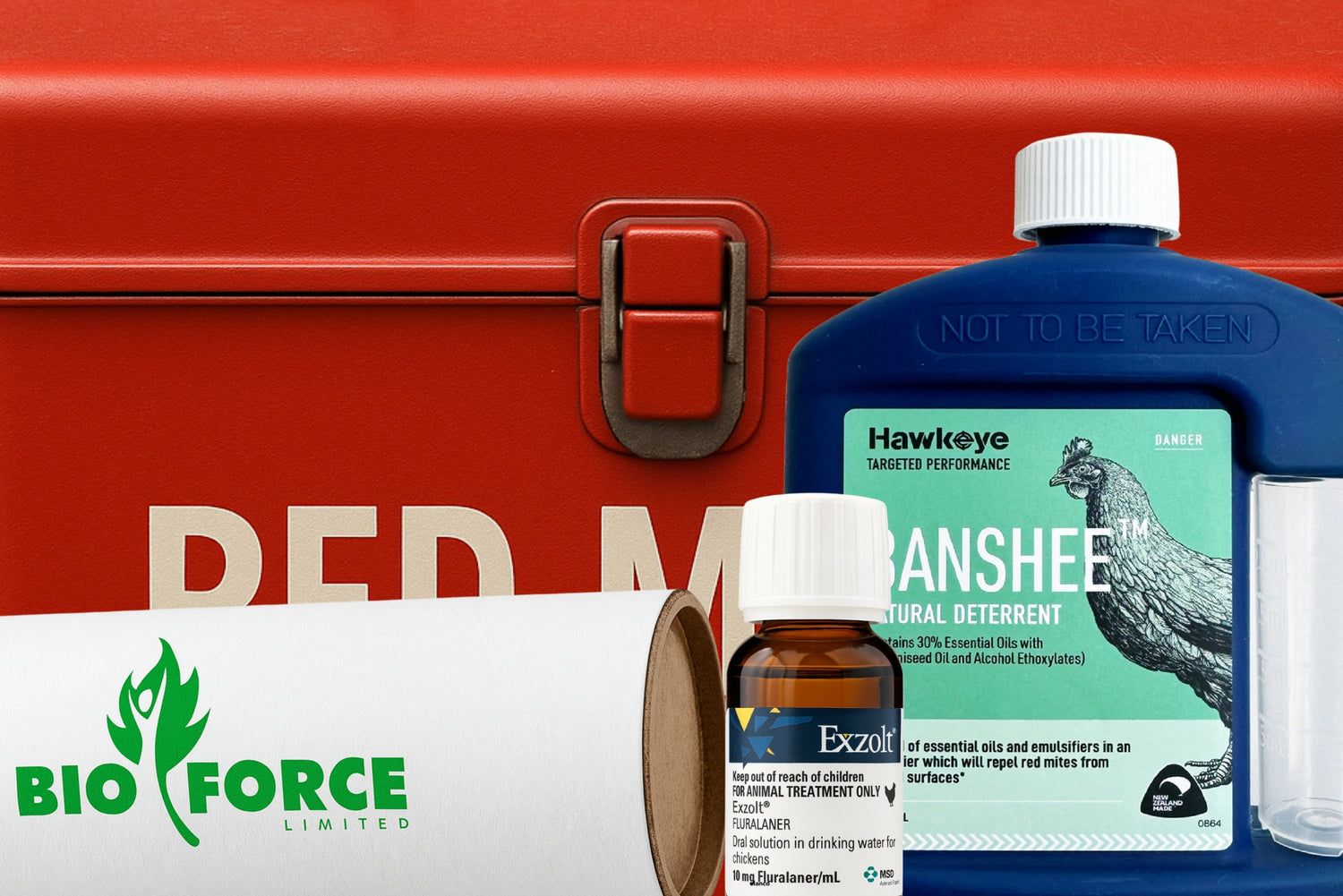
Treatment Options
Managing red mite outbreaks during lay is challenging due to limited treatment options that are safe for poultry. However, effective tools are available and are best used in combination:
Exzolt (fluralaner) is one of the only highly effective chemical treatments we have for red mites, and it should be thought of as a “break-glass-in-case-of-emergency” option. It’s an in-water treatment with no egg withholding, providing systemic control and up to 12 weeks of protection when used at the correct dose and timing. However, because it is so powerful, it should not be used routinely, overuse increases the risk of resistance, which would make this vital tool less effective in the future. Save Exzolt for major infestations where other control methods aren’t enough.
Banshee is a natural, easy-to-use spray that helps keep red mites under control in your chicken coop. Made with essential oils instead of harsh chemicals, it works by making life harder for mites and reducing the pressure on your flock. Simply mix with water and apply to coop surfaces using a garden sprayer or trigger bottle every few days, never directly onto your birds. With low residues, less stress on your chickens, and simple application, Banshee is a handy extra tool to add to your red mite control routine.
Bioforce predatory mites (Stratiolaelaps spp.) are tiny, beneficial mites that feed on pests like red mites and other small insects, but never on your birds. They’ve been used successfully in New Zealand for years as a natural form of biological control. By hunting and eating red mites, they help keep populations down without the need for harsh chemicals. Predatory mites are especially useful for anyone wanting to reduce chemical use, support residue-free production, or add a safe, natural layer of protection to their red mite control plan.
Osmoslay is a surfactant-based contact spray designed to kill mites directly on coop surfaces and in cracks. It works by breaking down the mite’s protective waxy layer, causing dehydration and death. When infestations are heavy, targeted spraying of perches, nest boxes, and crevices can help bring numbers down quickly. However, use with caution around birds, this product is for treating housing surfaces, not the animals themselves.
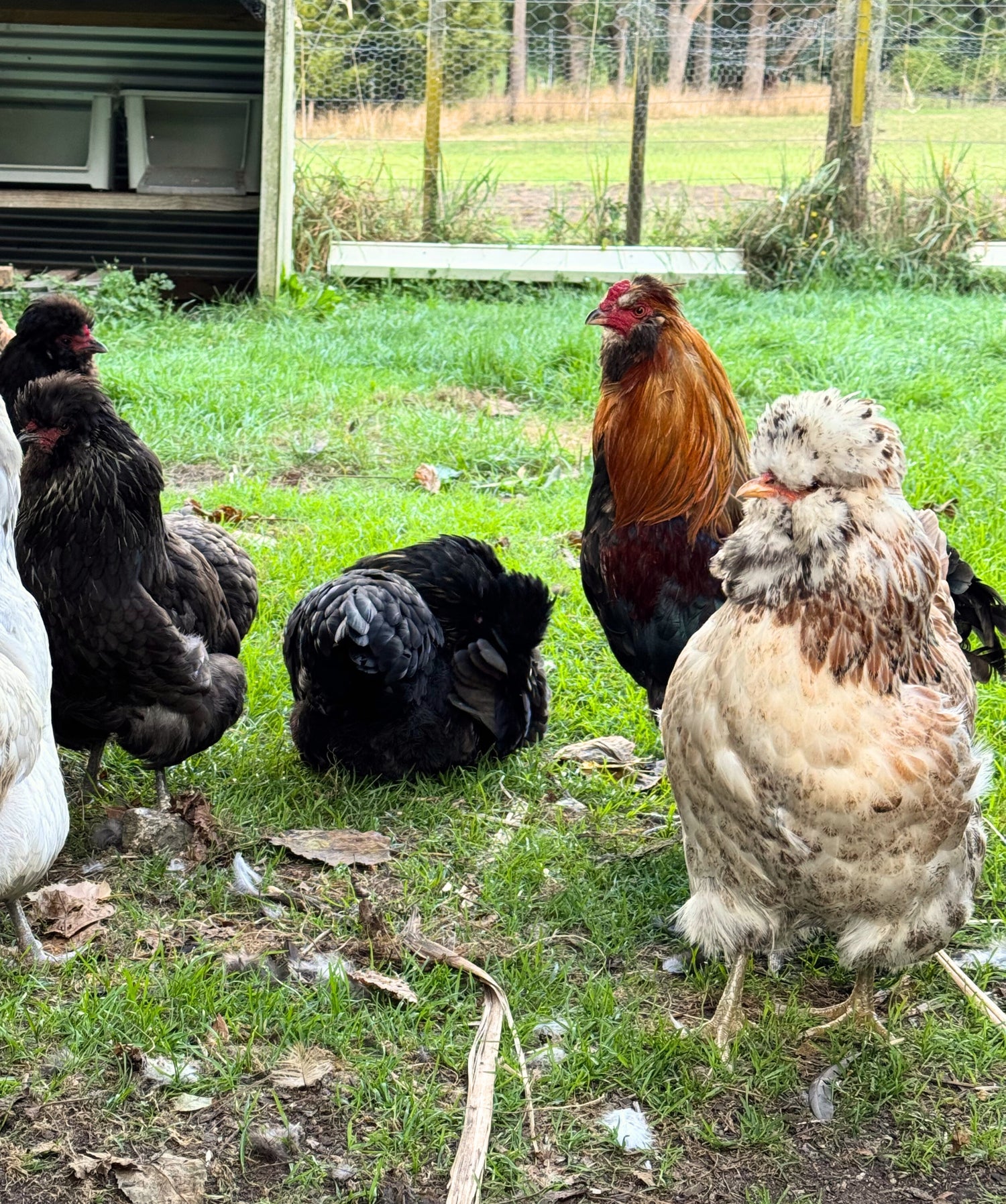
Summary
There are many different tools in the red mite toolbox, and it’s important to understand that there’s no single “silver bullet” for control. Success comes from knowing the range of options available, from cleaning, coop design, and biosecurity, to treatments and preventative checks, and using them appropriately where they’re needed. By combining strategies, rather than relying on just one, you’ll have the best chance of keeping red mites under control and your chickens healthy.
MSD
Exzolt - 50ml
Share
